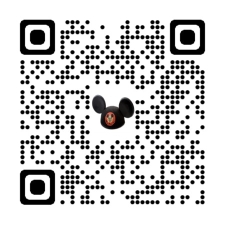How Disneyland Hides Eyesores In Plain Sight With Go Away Green
ID:
TMS-5545
Source:
SFGate
Author:
Katie Dowd
Dateline:
Posted:
Status:
Current
Disneyland is all about immersion: stepping into a jungle adventure, getting lost in the alleyways of old New Orleans, escaping to a far-flung planet in the “Star Wars” universe. But as beautifully detailed as these lands are, some things just can’t be avoided. Like hand rails and power outlets.
For these legal and logistical necessities, Disneyland came up with its own paint colors, the most famous of which is “Go Away Green.”
From the start, color was one of the most important components of Disneyland’s world-building. John Hench, who worked for more than 60 years as a Disney creative, pioneered much of the color palette of Disneyland and Disney World. Paint colors were not chosen lightly. Hench created detailed color boards for each project, going so far as to create his own system of assigning identification numbers to specific shades. It became known as the Hench Color System.
In his book “Designing Disney,” Hench described how Imagineers carefully picked the colors of Main Street. The Candy Palace was done in pastel to mimic the color of saltwater taffy, while a men’s clothing store was painted in darker shades.
“Each shop has a distinct color identity that nonetheless harmonizes with its neighbors,” Hench wrote. “The interior colors also encourage guests to move from one shop to another with ease. The palette we chose came to be accepted by guests as the color of Main Street.”
When it came time to paint the exterior of the Haunted Mansion, Hench wanted the building to look old but not decaying. To achieve an “eerie, deserted feeling,” Hench “had the underside of exterior details painted the same dark color, creating exaggerated, unnaturally deep cast shadows.” Nearly five decades later, the illusion still works.
Occasionally, Disney Imagineers ran into a problem: safety regulations. While finishing the American Adventure pavilion in Epcot, a safety railing needed to be added to bring the building up to code. This was a “particular challenge,” Hench wrote, because a metal railing “in the middle of a Colonial staircase … undermined the identity of the main entrance room.” To get around the issue, they used the power of color.
“We chose a neutral gray-brown for the railing, a ‘go away’ color that did not call attention to itself, even though it was entirely unrelated to the Colonial color scheme,” Hench wrote. The fix was a success; it didn’t “conflict visually” while still meeting the safety requirement.
Go Away Green is the most-used camouflage color due to the lush vegetation of the Disney parks. Look in any flower bed and you’ll likely find an example; Disney often hides external wiring and electrical units by matching the landscaping with a green paint color.
To help things blend in even more naturally, Hench wrote that they created special pavement colors. In Epcot, for example, the pavement is tinted pink to “complement the lawn and shrubs, making the landscape appear even greener.”
In Disneyland, you’ll find lots of “go away” colors on the backs of buildings. Look to Tom Sawyer Island from the shore and some buildings are painted green to blend in with the trees. Around the perimeter of the park, you’ll also encounter buildings painted blue, meant to blend in with a sunny California day. (In Disney World, that shade is tinted differently because the Florida sky is a more intense blue, Hench wrote.)
If you’re looking for a game to pass the time while waiting in ride lines, find the hidden “go away” features that Disney has painted green or blue to blend in with their surroundings. One of our favorites is the door to Club 33, Disney’s private and pricey membership club. While much of New Orleans Square uses deep reds and gold accents to accentuate doors and windows, the entrance to Club 33 is subdued in light green — almost as if they want us plebes to walk right by without noticing it.
Attractions Referenced In This Article:
Restaurants Referenced In This Article:
Shops Referenced In This Article:
Lands Referenced In This Article:





